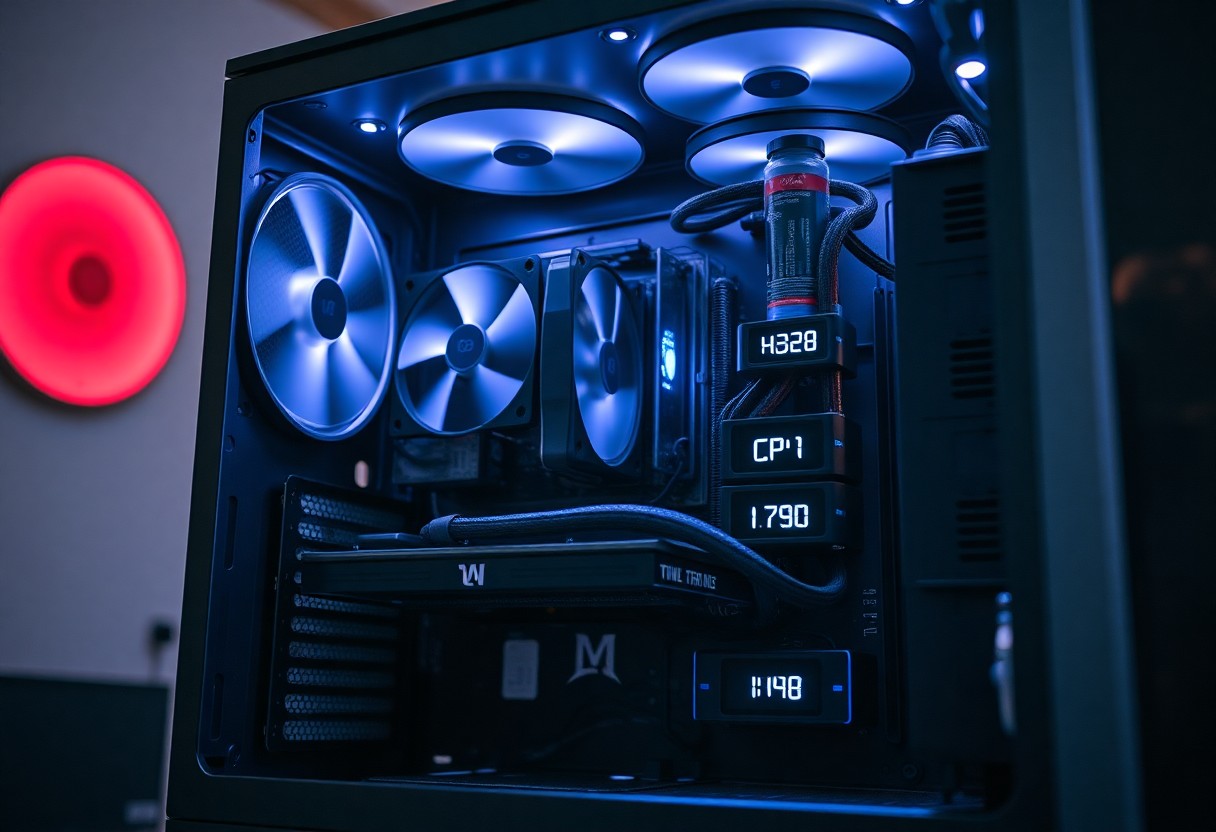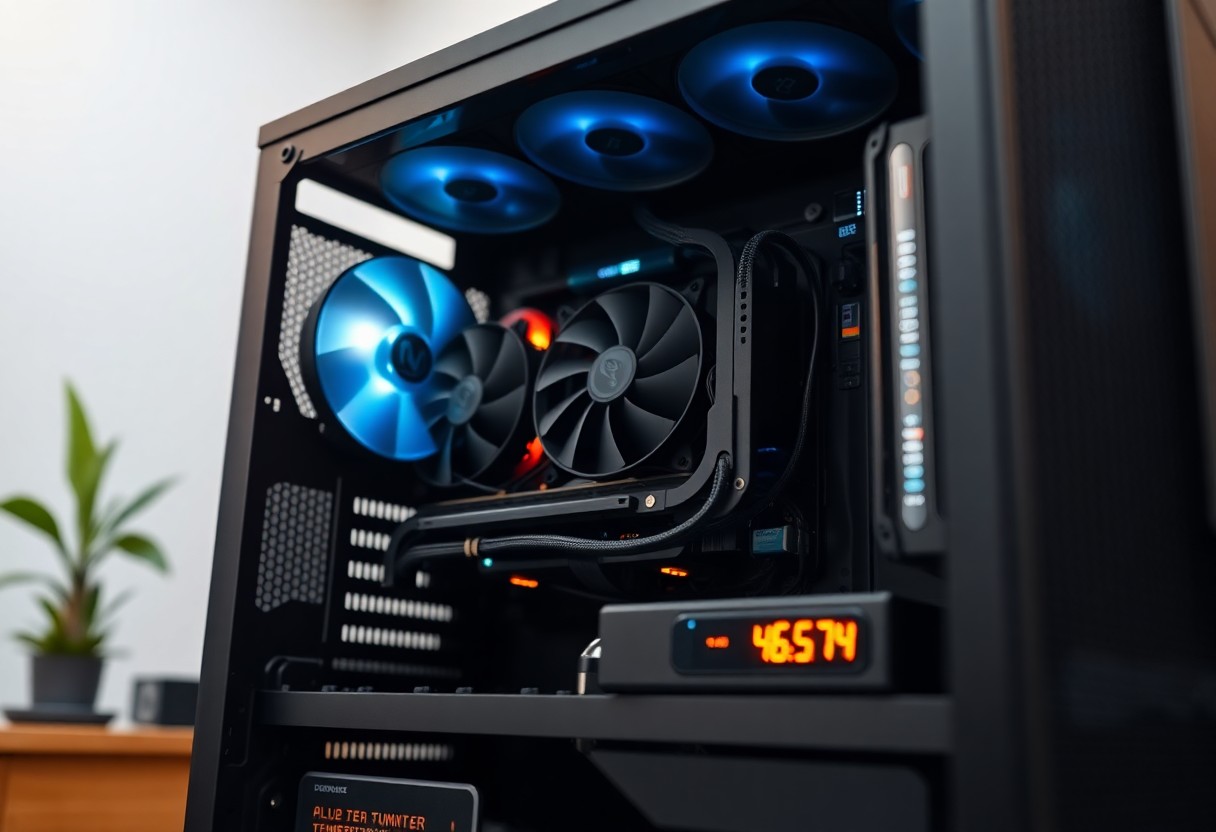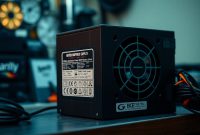Just like any high-performance engine, your CPU can overheat, leading to performance issues and potential damage. Fortunately, you don’t need to buy new hardware to keep your temperatures in check. In this guide, you’ll discover practical strategies to lower your CPU temperature, from optimizing your system settings to enhancing airflow. By following these simple steps, you can help maintain your computer’s health and improve its performance without spending a dime. Let’s dive in and explore how to create a cooler, more efficient computing environment!

Understanding CPU Temperature
A CPU’s temperature is a key indicator of its performance and longevity. Monitoring this temperature helps ensure your computer runs efficiently, preventing thermal throttling or hardware damage. Here’s a brief overview:
| Normal Operating Range | 30°C – 70°C (86°F – 158°F) |
| Overheating Threshold | Above 80°C (176°F) |
Factors Affecting CPU Temperature
One of the significant aspects impacting your CPU’s temperature involves several internal and external factors. These include:
- Ambient temperature
- CPU workload
- Cooling solution efficiency
- Case airflow
- Thermal paste quality
This underscores the importance of monitoring and optimizing these elements regularly.
| Internal Factors | CPU workload, Cooling solution efficiency, Thermal paste quality |
| External Factors | Ambient temperature, Case airflow |
Importance of Maintaining Optimal Temperature
One vital reason to maintain your CPU at an optimal temperature is to ensure that it performs at its best and lasts longer. If the temperature remains consistently high, you may experience performance drops, system instability, or potentially permanent damage. This balance enhances your computing experience.
| Performance | Ensures smooth operation of applications |
| Longevity | Extends the lifespan of hardware |
| System Stability | Prevents crashes and errors |
Factors contributing to your CPU’s operational stability are manifold. Regular maintenance, timely updates, and environmental considerations impact its temperature levels directly. Effective cooling methods and appropriate usage practices can significantly enhance performance and lifespan. Exploring these factors can lead to a noticeable improvement in your computer’s reliability.
| Maintenance Practices | Regularly clean components and check cooling solutions |
| Environmental Control | Adjust ambient temperatures and improve airflow |
How to Lower CPU Temperature
Some effective methods to lower your CPU temperature include enhancing airflow, cleaning the cooling components, and utilizing software tools. Let’s explore these techniques in detail.
Tips for Improving Airflow
| Action | Description |
| Reorganize cables | Keep cables tidy and out of airflow paths. |
| Optimize case placement | Ensure the case is in a well-ventilated area. |
| Use additional fans | Add fans to increase air circulation. |
Tips for Improving Airflow
- Dust off ventilation grates regularly.
- Ensure fans are unobstructed by objects.
- Invest in a case with better airflow design.
The proper airflow significantly impacts your system’s cooling performance.
Software Solutions to Monitor and Control Temperature
To effectively lower your CPU temperature, consider using software solutions that help monitor and control temperatures. Tools like HWMonitor or Core Temp give you real-time temperature readings, while others can automatically adjust fan speeds based on the heat your CPU generates.
Additional Software Tools
| Software | Function |
| HWMonitor | Monitors temperature for various components. |
| Core Temp | Tracks CPU temperature directly. |
| MSI Afterburner | Allows for fan speed adjustment. |
Another effective way to manage your CPU temperature is to utilize built-in motherboard software for fan control. These programs allow you to set custom fan curves based on your CPU’s temperature, ensuring that your cooling system responds proactively to heat generation.
More Software Options
| Option | Purpose |
| SpeedFan | Controls fan speeds based on thermal sensors. |
| Open Hardware Monitor | Provides detailed temperature readings and fan control. |
| ThermalTake software | Offers various cooling settings for Thermaltake products. |
Cleaning and Maintenance
Any buildup of dust and debris inside your computer can significantly impact its thermal performance. Regular cleaning and maintenance are vital to ensure that your CPU remains cool. Dust can obstruct airflow, making it difficult for your cooling system to operate effectively. By adopting a preventive approach to cleaning, you can lower your CPU temperatures without spending on new hardware.
Dust Removal Techniques
If you notice a layer of dust accumulating on your computer components, it’s time to take action. Use compressed air to carefully blow out dust from the CPU cooler, fans, and vents. Make sure to hold the fan blades in place while cleaning to avoid damaging them. Additionally, consider using a soft brush to reach areas that are hard to access, ensuring that you remove the dust effectively.
Thermal Paste Application
Any inefficient thermal transfer between your CPU and its cooler can lead to higher temperatures. Over time, thermal paste can dry out and lose effectiveness, causing poor heat dissipation. By reapplying thermal paste, you ensure that your CPU remains cool and operates efficiently without needing an upgrade.
To reapply thermal paste, start by removing the CPU cooler carefully and cleaning off old paste with isopropyl alcohol. Apply a small, pea-sized amount of new thermal paste in the center of the CPU. When you secure the cooler back in place, it will spread the paste evenly, creating a better thermal contact. This simple maintenance step can help to significantly reduce your CPU temperatures, allowing for improved performance during intensive tasks.
Overclocking and Performance Settings
To effectively lower your CPU temperature, you may consider fine-tuning your overclocking settings and performance parameters. By optimizing these settings, you can enhance your system’s efficiency and potentially reduce heat generation. Start by monitoring the current performance of your CPU and make adjustments gradually, ensuring stability to avoid overheating.
Safe Overclocking Practices
For the best results, it’s crucial to follow safe overclocking practices. This involves incrementally increasing your CPU’s clock speed and core voltage while continuously monitoring the temperature. Using software tools can help you manage these changes without exposing your hardware to unnecessary risk.
Adjusting BIOS Settings for Temperature Control
Safe adjustments in your BIOS settings can significantly enhance temperature control. Consider modifying the following parameters:
| CPU Voltage Settings | Lower voltage can reduce heat output. |
| Fan Speed Control | Increase fan speed for better cooling. |
| Performance Profiles | Select a balanced profile for less heat generation. |
It is advisable to check each setting under load to assess its impact on temperature. Adjustments can lead to a more stable and cooler CPU performance, helping in maintaining a comfortable operating temperature during extended usage.
| Enhanced Intel SpeedStep | Allows your CPU to run at lower speeds when idle. |
| TPM Settings | Checking thermals for efficiency across the board. |
Additional Cooling Solutions
Unlike standard cooling techniques, there are various additional solutions you can implement to enhance your CPU’s thermal performance. These solutions can improve airflow, reduce heat accumulation, and ultimately help maintain optimal temperatures while avoiding hardware upgrades.
Upgrading Cooling Systems
There’s a wealth of options when it comes to upgrading your cooling system. You can replace a stock cooler with a more efficient one, or opt for liquid cooling systems that provide superior heat dissipation.
Utilizing External Cooling Devices
With the right external cooling devices, you can further assist in heat management. These devices, such as cooling pads or fans, can supplement your current cooling strategy and keep temperatures lower.
It’s important to select external cooling devices that are appropriate for your setup. For example, using a laptop cooling pad can significantly enhance airflow under your laptop, while external USB fans can be directed towards your computer tower to improve ventilation. Incorporating these devices alongside your existing cooling solutions can lead to a substantial decrease in CPU temperatures, ensuring your system performs optimally without any major hardware changes.
Monitoring Your Progress
Many people overlook the importance of tracking your CPU temperature changes after applying new cooling strategies. By actively monitoring your progress, you can determine which methods are most effective and whether your efforts are resulting in a cooler system. This not only gives you insight into your current setup but also helps you make informed adjustments to maintain optimal performance.
Tools for Tracking Temperature Changes
Clearly, utilizing the right tools can assist you in monitoring temperature changes effectively. Below is a list of popular software options:
| Core Temp | Simple interface focusing on CPU temperature. |
| HWMonitor | Monitors various system parameters, including temperatures. |
| MSI Afterburner | Ideal for users looking to tweak their GPU alongside CPU. |
Regular Maintenance Checks
On top of monitoring your CPU temperature, incorporating regular maintenance checks into your routine is important. These checks can involve cleaning dust from fans, ensuring proper airflow, and verifying thermal paste application, all of which can significantly influence your CPU temperature. By being proactive about these practices, you not only maintain cooler temperatures but also prolong the lifespan of your components.
Monitoring your CPU temperature regularly serves as a vital feedback mechanism for evaluating your cooling efforts. Establishing a routine where you perform maintenance checks every few months allows you to catch issues early before they escalate. For instance, cleaning fans and ensuring that vents are clear can prevent overheating, providing a more stable environment for your CPU. Being attentive to these details can help you achieve consistent performance and potentially extend the longevity of your hardware.
Final Words
With this in mind, you can effectively lower your CPU temperature without the need for hardware upgrades by following a series of practical steps. Start by ensuring proper ventilation in your workspace, cleaning dust from fans and heatsinks, and optimizing your cooling system. Additionally, managing your CPU’s performance settings and keeping your software up to date will contribute significantly to temperature regulation. By implementing these strategies, you will enhance your PC’s performance and prolong its lifespan while maintaining an efficient working environment.



